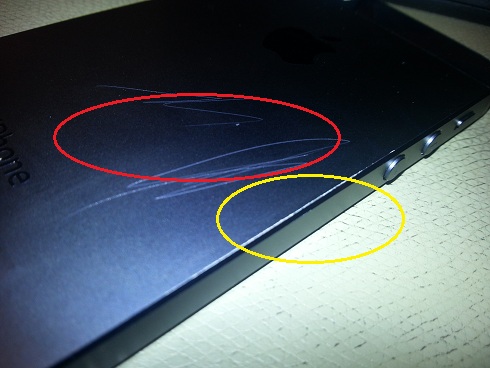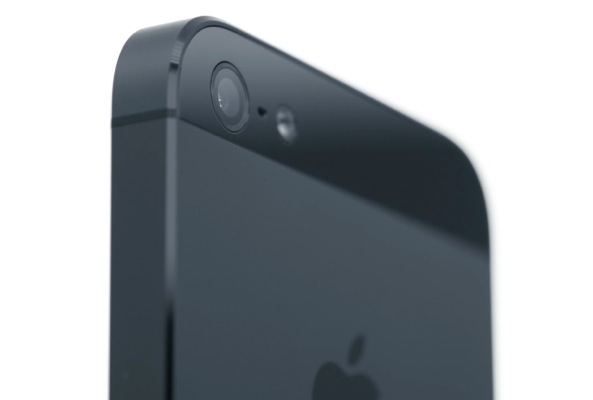“Is that a scratch on your iPhone”, a friend of mine asked, much to my horror and surprise. I’d only had this iPhone 3GS for a couple hours and already pesky scratches were beginning to show on its shiny plastic back. The glass back on my iPhone 4/4S has proved far less prone to wear and tear, perhaps partially due to past experiences which taught me to handle my pricey devices with utmost care.
You’d be pressed to think there was no difference in how black & slate and white & silver iPhone 5 models withstood wear and tear stemming from daily use. That said, you’re in for a surprise as some folks apparently have discovered that both the anodized aluminum back and the chamfered edges of the black iPhone 5 are conspicuously more prone to wear versus its white counterpart…
Pocket-lint notes in its review that the black iPhone 5 model started developing unpleasant signs of wear around its beautiful chamfered edges after a few days of heavy use, revealing the shiny silver aluminium metal underneath the slate colored coating:
Ditching the glass back and reducing the thickness of the glass panel on the front has affected the design of the metal band around the edge of the iPhone.
It is now chamfered and while that looks pretty, we’ve already noticed that on the black model the edge has started to wear, revealing the shiny silver aluminium metal underneath the “slate” coloured coating and, indeed, we’ve witnessed it on two separate models, ruling out a fluke manufacturing error.
Hm, that can’t be good.
Image via Twitter
A MacRumors forum thread notes that the black bezel, when scratched, shows bare silver metal. Blame it on anodizing, a manufacturing process which electrically charges particles on the surface rather than going all the way through the metal.
Another person performed a similar test, damaging the back of the black iPhone 5 with a SIM card tray and scratching the edge with keys. The results can be seen in the top image.
The iPod nano’s anodized body also suffers from the same problem, as seen below.
An example of scratches on the iPod nano’s anodized aluminum body. Image via Flickr.
Of course, your mileage may wary as it all depends on how you handle your devices. It should also be mentioned that Pocket-lint’s definition of “daily use” probably differs wildly from how average Joes handle their smartphones in that the publication was purposefully unforgiving and aggressive in its battery of tests.
And here’s iFixit’s scratch test on the black iPhone 5.
Now, I know it’s not what you probably wanted to hear, but you can always use a case to protect your device.
Not me – I don’t do iPhone cases.
In my opinion, the device’s extraordinary level of fit and finish deserves to be fully shown rather than obscured with a case which inevitable increases thickness and adds bulk. Moreover, I’m the type who typically checks for coins, car keys and other objects before slipping the device in his pocket.
I’m also careful in putting my iPhone on a table or other flat surfaces and think twice before picking it up hastily. Matter of fact, I might have developed a case of obsessive-compulsive disorder for I’m very careful about who gets to hold my device in their hand.
After seeing the top image, my initial reaction was, “dang, I’m not gonna be getting a black iPhone 5 after all”.
Then again, even though I prefer my mobile devices in white, the black iPhone 5 is way more sexy and stylish than its white counterpart, wouldn’t you agree?
The heck with the scratches, I’m going with black for this year’s iPhone.
It goes without saying I’m gonna be handling my “Rolex of smarphones” with care and so should you.



